Bow Street Runners and Early British Detectives

Naturally, our first priority was to find out more about our skeleton in the closet but we were also intrigued by Detective Lavender. He was referred to as ‘a principal officer’ with the Bow Street magistrates’ court in London. I had heard the phrase ‘Bow Street runner’ many times before but I had no idea that there were British detectives as early as 1809. I had always assumed that detectives were created along with the rest of the police force by Sir Robert Peel in 1829.
Years of research at The National Archives in London and the Northumberland Records Office gradually disclosed that our Jamie had been convicted of stealing the rent money from the Northumbrian manor house, Kirkley Hall. It was an audacious crime; over £1,157 had been taken from the estate office at the hall. Our research also revealed that Nathanial Ogle, the wealthy owner of Kirkley Hall, had paid for Detective Lavender to come up from London to solve the case.
To Ogle’s delight, Lavender recovered the bulk of the missing money. It had been thrown back over the wall of the kitchen garden in a sack, and lay half-hidden by a currant bush for several days until the detective instigated a thorough search of the grounds. Only £162 of coins remained outstanding. This is not as surprising as it may seem. Most of the recovered money was paper banknotes which had only been in circulation for a few years; in 1809 most British commoners did not understand or trust paper money.
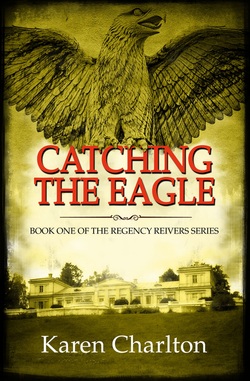
Jamie Charlton also went home but he was rearrested a year later. This time the evidence came from Jamie’s former cell mate, William Taylerson, and the local magistrate instigated the arrest. Taylerson claimed that when they shared a cell together in prison, Jamie Charlton had confessed to him that he had, indeed, committed the crime. Taylerson was a horse thief, already sentenced to death. After a trial which lasted fourteen hours, a jury of local landowners and nobility found Jamie guilty in just five minutes. They sentenced him to transportation, and granted Taylerson a full pardon. The whole thing smacked of a miscarriage of justice - even by the dodgy legal standards of the Regency.
The ideal plot for a historical novel had just landed in my lap and Catching the Eagle was born. It took two years to write this book, which was eventually published by Knox Robinson Publishers of Historical Fiction in December 2011.
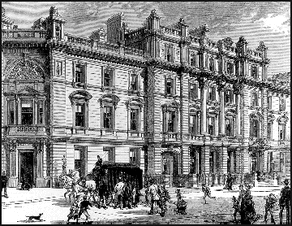
Natural curiosity drew me towards their world. I began to invest time, money and effort on investigating those early British detectives. ‘A Certain Share of Low Cunning: A history of the Bow Street Runners 1792 – 1839’ written by David J. Cox became the main source of my research. I discovered that back in 1809, Bow Street Magistrates’ court, was the thriving centre of policing in the crime-ridden capital of England. Bow Street and the Old Bailey Criminal Court were the vibrant partners in London’s justice system.
http://www. oldbaileyonline.org/ is ripe source of information and inspiration for any author interested in crime, criminals and early British detectives. This website documents the proceedings of the Old Bailey, between the years of 1674-1913 and contains details of 197,745 criminal trials held at London's central criminal court. Stephen Lavender frequently appears on the stand as a police witness in these documents.
Number 4 Bow Street was where Sir Henry Fielding, novelist and magistrate, first persuaded the British government to establish a police force in 1747. This was in response to the growing call to find an effective means to tackle the increasing crime and disorder in the capital, where every fourth shop was a ‘gin house,’ a vast sex trade sprawled across hundreds of brothels and gangs of highwaymen and cut-throats terrorized the roads on the outskirts of London. Fielding brought together eight reliable constables, who soon gained a reputation for honesty and efficiency in their pursuit of criminals and later came to be known as ‘the Bow Street Runners.’ But Fielding faced an uphill struggle against both organised crime in the capital, and the mistrust of the politicians who paid for his policemen.
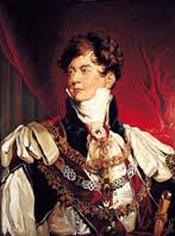
By 1809, the year of my novels, the number of police personnel had dramatically increased and a horse patrol had been established to bring some law and order to the crime-infested outlying areas. Principal officers were restyled ‘detectives’ and had various roles. Apart from supporting their colleagues in the capital, they were often sent out to help magistrates in the provinces with difficult cases. They took part in undercover work in periods of insurrection, for example, during the Luddite riots in the Midlands.
The principal officers were a policing elite, famous throughout London, and the aristocracy loved them. They did security work for the Bank of England and acted as bodyguards for Royalty, especially the Prince Regent. They were the only policemen allowed into Buckingham House, the forerunner of the palace. On occasions they were even sent abroad to help with crimes and criminals who had spilled out over our borders onto the continent.
According to the records I have unearthed, Stephen Lavender spent a lot of his time working on difficult cases out in the provinces. Wealthy landowning citizens, like Nathanial Ogle of Kirkley Hall, could request the help of a principal officer. Bow Street would charge them a hefty fee and the detectives could claim lucrative expenses on top of their salary. Many principal officers became very rich.
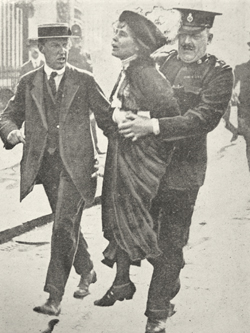
Bow Street itself remained a magistrates’ court until 2004. During its two hundred and fifty year reign as Britain’s most famous police station, it has had both the famous, and the infamous, pass across its threshold. From the legendary lover, Giacomo Casanova, to the murderer, Dr. Crippen, and the notorious East End gangsters, the Kray twins; from the famous mother and daughter suffragettes, Emmeline and Christabel Pankhurst to the brilliant, homosexual playwright, Oscar Wilde and more recently, the Chilean dictator , General Pinochet.

In this first novel in a new series, the two policemen are called back to Northumberland, to investigate the mysterious disappearance of a beautiful young heiress from a locked bedchamber. Convinced that this is a simple case of a young woman who has eloped with her lover, Lavender and Woods are later alarmed to discover a sinister world of madness, violence and secrets lurking behind the heavy oak door of the ancient pele tower at Linn Hagh.
The Missing Heiress was published by Knox Robinson Publishing on 6th December 2012.
(Article first published on Shots: Crime and Thriller eZine, December 2012)
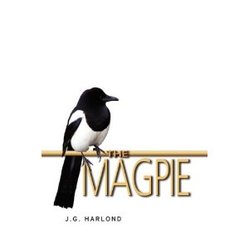
 RSS Feed
RSS Feed